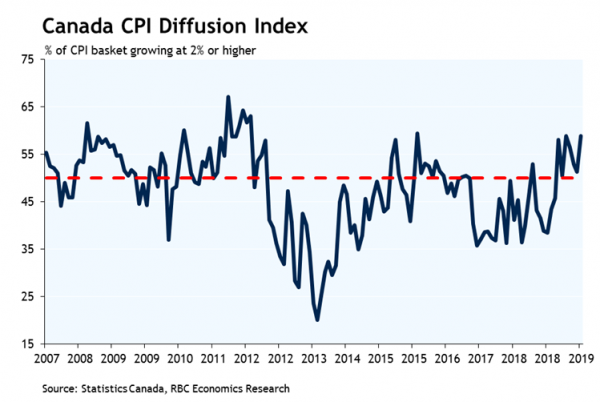- CPI inflation slipped to 1.9% from a year ago
- Ex-food & energy price growth edged down to 2.1%
- But the BoC’s preferred ‘core’ measures inched up to 2.1%, on average.
The headline inflation rate was a touch below market expectations in September, but in large part due to big month-over-month price changes in some of the more volatile subcomponents. Airfares were expected to fall month-over-month due to ‘normal’ seasonal patterns but the 20% September plunge was still larger than anticipated. And September tuition fees posted their first decline on record (since 1973) because of Ontario government-mandated tuition cuts.
But other details were firmer and left underlying inflation trends looking still solidly planted around the Bank of Canada’s 2% inflation target. The BoC’s three preferred ‘core’ inflation measures edged up to 2.1%, on average, from 2.0% in August. By our count, almost 60% of the CPI basket was growing at or above a 2% rate relative to a year ago in September. Of course, the central bank is also still concerned that slower global growth and the US-China trade war could slow the Canadian economy, and ultimately Canadian inflation, going forward. For now, stable underlying price-growth trends leave room for monetary policy flexibility – the lack of upward inflation pressure gives the Bank of Canada room to respond with lower interest rates if needed, while the absence of downward pressure also means there’s no need to rush to make that decision.












